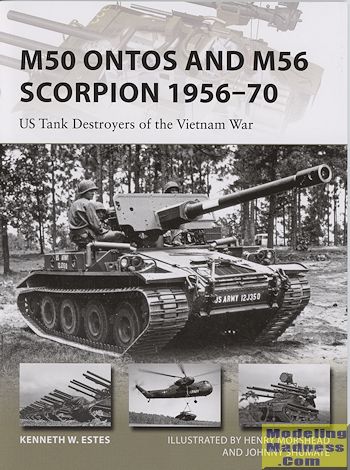 After
the Cold War got underway, both the US Army and USMC were preoccupied with how
to deal with Soviet Tanks. It was thought that some sort of small, highly mobile
vehicle with enough punch to perform 'shoot and scoot' maneuvers was needed.
This vehicle did not require heavy armor as it would be firing from ambush
positions. Armor would also slow the vehicle down and reduce its effectiveness.
Korea showed that US tanks were not all that great when it came to anti-armor as
the Korean terrain was not conducive to relatively heavy tanks.
After
the Cold War got underway, both the US Army and USMC were preoccupied with how
to deal with Soviet Tanks. It was thought that some sort of small, highly mobile
vehicle with enough punch to perform 'shoot and scoot' maneuvers was needed.
This vehicle did not require heavy armor as it would be firing from ambush
positions. Armor would also slow the vehicle down and reduce its effectiveness.
Korea showed that US tanks were not all that great when it came to anti-armor as
the Korean terrain was not conducive to relatively heavy tanks.
What was needed was something new. Something that had not been done
before. The result of thinking out of the box are the subject vehicles of this
book.
The Ontos was initially conceived as operating recoilless rifles. It was
felt that this weapon would have the punch needed to penetrate Soviet armor and
thanks to the lack of recoil, several could be mounted on the same small
platform. This vehicle, like the M56 was developed by the Army. The USMC does
not have vehicles like this specifically developed for them, but looks at what
the Army is doing and if it fits their needs, will procure it.
Another major requirement was that it be air mobile. This meant something rather
light weight that could be carried by the then current standard transport, the
C-82 Packet. This was another reason for minimal armor. The M50 eventually
became something was was procured by the USMC and used in combat in
Vietnam. These were also used during other smaller crises in Lebanon and the
Dominican Republic. Since they were built in relatively small numbers, their
actual service life was short and they really were never used in their intended
role.
The Army was also developing a similar vehicle, the M56 Scorpion. This
had a single standard gun and was pretty well bereft of any armor. At least with
the Ontos, the crew could stay inside the vehicle except to reload it where they
were pretty well secure from small arms fire. With the M56, everyone on the crew
was out in the open. For some reason, the Army decided the M50 Ontos would not
meet their needs, but the M56 would. Fortunately for their crews, it was used on
a very limited basis for a short period of time in Southeast Asia, where it fell
out of service due to a lack of spares.
With this book, the author tells us the rather intriguing history of the
background requirements of the vehicles and their development. Their minimal
combat use is also covered. These two interesting vehicles were very much a dead
end and it is thankful that their crews were not required to use them in their
intended role against the Soviets. Interestingly, the Army considered these
vehicles to be expendable, so I guess it felt that way about the crews as well.
This volume is packed full of interesting photos of these vehicles and I
particularly liked the illustrations that accompany the book. It is a great look
at two little known, but pretty cool vehicles and one that you should have on
your library shelves.
November 2016
Copyright ModelingMadness.com. All rights reserved.
For more on the complete line of Osprey books, visit
http://www.ospreypublishing.com
If you would like your product reviewed fairly and
fairly quickly, please
contact
the editor or see other details in the
Note to
Contributors.
 After
the Cold War got underway, both the US Army and USMC were preoccupied with how
to deal with Soviet Tanks. It was thought that some sort of small, highly mobile
vehicle with enough punch to perform 'shoot and scoot' maneuvers was needed.
This vehicle did not require heavy armor as it would be firing from ambush
positions. Armor would also slow the vehicle down and reduce its effectiveness.
Korea showed that US tanks were not all that great when it came to anti-armor as
the Korean terrain was not conducive to relatively heavy tanks.
After
the Cold War got underway, both the US Army and USMC were preoccupied with how
to deal with Soviet Tanks. It was thought that some sort of small, highly mobile
vehicle with enough punch to perform 'shoot and scoot' maneuvers was needed.
This vehicle did not require heavy armor as it would be firing from ambush
positions. Armor would also slow the vehicle down and reduce its effectiveness.
Korea showed that US tanks were not all that great when it came to anti-armor as
the Korean terrain was not conducive to relatively heavy tanks.